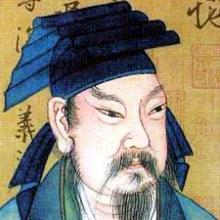
Wang Xizhi was a Chinese calligrapher traditionally referred to as the Sage of Calligraphy, who lived during the Jin Dynasty (265–420). He is considered by many to be one of the most esteemed Chinese calligraphers of all time, especially during and after the Tang Dynasty, and a master of all forms of Chinese calligraphy, especially the running script.

Wang Xizhi (c. 303 – 361) was a renowned Chinese calligrapher from the Eastern Jin Dynasty, revered as the “Saint of Calligraphy” by later generations. Born in Linyi, Shandong Province, he spent most of his life in present-day Shaoxing, Zhejiang.
Wang learned calligraphy from the master Wei Shuo and excelled in various scripts, particularly the semi-cursive style. His most celebrated work is the “Preface to the Poems Composed at the Orchid Pavilion” (Lantingji xu), composed in 353 at the Orchid Pavilion Gathering.
Though the original is lost, numerous fine tracing copies exist, with the earliest dating back to the 7th century.
Calligraphic Legacy
Wang was renowned for his proficiency in multiple script styles, including regular, semi-cursive, and cursive forms.
Other famous works attributed to him include the “Letter of Distress and Indignation” (Sangluan tie) and “Letter to Kong” (Kong shizhong tie), of which tracing copies were preserved in Japan’s Shōsōin treasure house.

Wang’s unique calligraphic style greatly influenced later generations of calligraphers.
Emperor Taizong of the Tang Dynasty admired Wang’s works and included 1,000 characters written by him in a calligraphy guide for students.
Wang’s calligraphy was also highly valued by collectors, with a small Tang reproduction of his work selling for $48 million at a 2010 auction in China.
Wang had seven children, all notable calligraphers, with his youngest son, Wang Xianzhi, being the most distinguished.
Legendary Practices
Wang Xizhi is particularly remembered for his hobby of rearing geese, as legend has it that he learned the key to turning his wrist while writing by observing their neck movements. It is said that he practiced calligraphy so diligently by a pond that the water turned black from his inky brushes.
“Sage of Calligraphy” from Shandong Province (June 20, 2010)